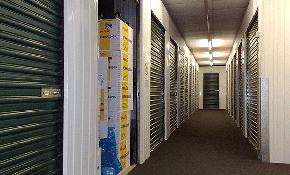JERSEY CITY, NJ−It is very clear what the “hot” topics at NAIOP‘s I.Con: The Industrial Conference will be: anything involving the rise of e-commerce and changing industrial requirements. Cushman & Wakefield’s John Morris tells GlobeSt.com that his Thursday will focus on most everything else.
“We all know that ‘normal’ business of industrial real estate continues, meaning ‘normal’ as it was six or seven years ago, before the rise of e-commerce,” says Morris, who is C&W’s national leader for industrial services.
“The question our panel is going to face is: Why are some of these trends that run counter to the prevailing trends of e-commerce or electronic fulfilment happening – where and why?”
Morris will moderate a panel discussion at 2:15 p.m. at the two-day Jersey City Hyatt Regency conference. Its title is “Counter Trends: When Opposite Investment Tactics Attract.” Panel members include:
- Lewis Friedland, managing Partner, Cobalt Capital Partners
- Jeff Miller, Oxford properties group
- Kevin Welsh, CBRE investment properties group
Cobalt operates three private REITs that have invested over $750 million in light industrial – or “flex” – properties nationwide. Morris says that Friedland’s approach is “maybe not traditional or core,” so he plans to query the Cobalt executive about Canadian markets where the company has invested and the unique types of industries that occupy some of its properties.
CBRE’s Welsh and Oxford’s Miller are set to discuss “Tier II” markets where their companies are active, as opposed to “Tier 1” – and smaller warehouse/distribution requirements as opposed to big-box e-commerce facilities, such as the 1.2 million- square-foot Amazon will open this summer in Robbinsville, says Morris.
“We will discuss everything but big boxes,” Morris says. E-commerce will come into the discussion, perhaps, but only at a slant, he says.
“I expect to ask about how the shift in housing patterns to urban areas is affecting smaller industrial requirements,” says Morris. “Some tech’ businesses have smaller, high-value items to ship in local markets that do require same-day delivery. They don’t need 800,000 square-foot buildings with 30-35-foot clear height or as much capability.
“What is happening with the cost and development of the smaller facilities? Our panel will focus on questions like that.”

















 Copyright © 2024 ALM Global, LLC. All Rights Reserved.
Copyright © 2024 ALM Global, LLC. All Rights Reserved.